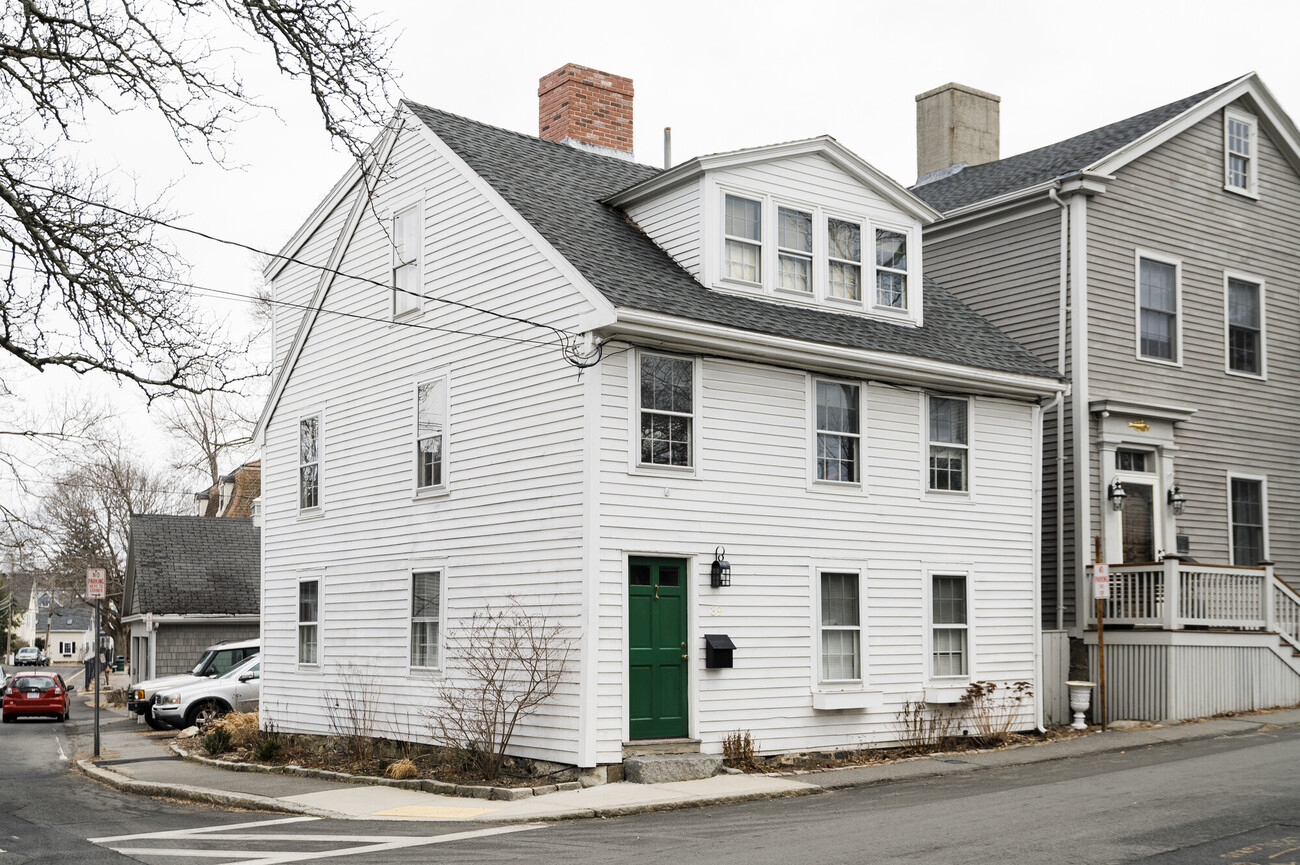Mugford Street is full of historic buildings, but one in particular stands out — or perhaps it’s more appropriate to say “fills in.”
Often a strangely shaped or peculiarly placed historic building is a “spite house” — a building meant to provoke irritation. An example is the building at the intersection of Orne Street and Gas House Lane.
Spite houses are extant buildings that have resisted demolition or incorporation by newer buildings. Call it resilience or call it stubbornness, the results are some of the most interesting buildings.
But other odd buildings are the opposite of spite houses. Rather than standing their ground amid development, they’ve wormed their way into already existing neighborhoods. These are called “infill buildings” and they are equally as intriguing.
One such infill building is at 31 Mugford St. To the untrained eye, the houses along Mugford may look as though they were built around the same time.
However, 31 Mugford came a little later than its neighbors. The Peter Jayne House at 37 Mugford was built sometime around 1724 or in the 1750s. The Roger Stevens House at 29 Mugford — to which 31 Mugford is attached — was built in 1715. Though it (almost) fits right in, 31 Mugford was likely built around 1780.
Though they are only three houses, 29, 31 and 37 Mugford span the range of residential development in 18th century Marblehead.
By the end of the 1600s, Marblehead had approximately 125 residences in town. By the end of 1790, it had approximately 700 residences. This massive expansion was in part due to a boom in residential building between the 1710s and 1750s.
Thirty-one Mugford made it into this development at the end of this period — just in time.
It was during this period that Marblehead saw an increase in the fishing industry and pre-Revolution commerce. Thanks to the developing economy, Marblehead became an increasingly desirable place to live. As such, new secondary roads, like Mugford, began to appear. On those roads people built their homes in an informal version of Georgian style — the predominant style among many of Marblehead’s historic homes.
Thanks to extensive archiving and preservation of not only historic homes but also the roads, we have a unique opportunity to see how people lived and got around.
We are quite literally able to walk the same streets as the merchants, revolutionaries and workers who made Marblehead what it is today.

